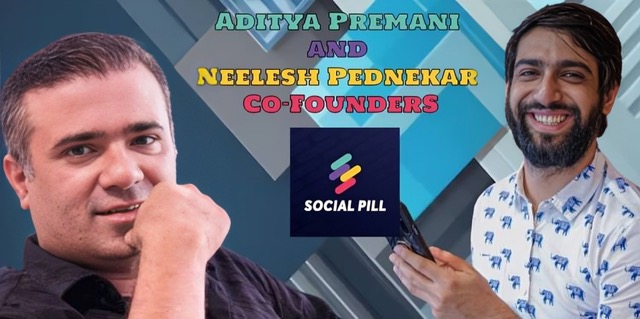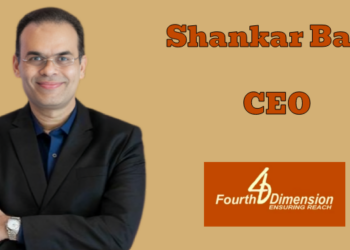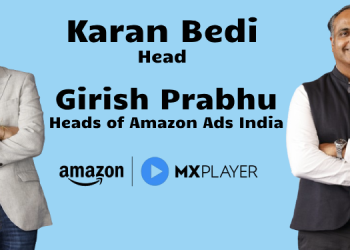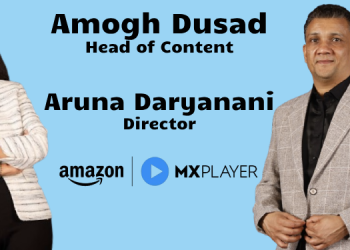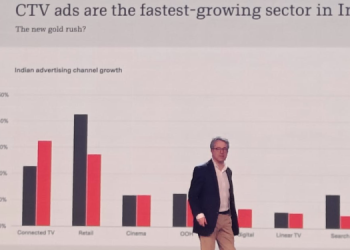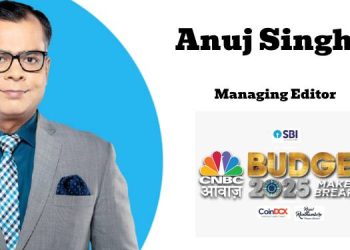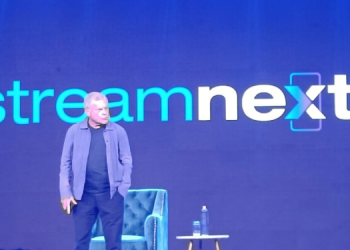Once upon a time, there was a startup called Paprika Idea Labs. But one day, while working with restaurants and bars for events, the founders noticed something strange. The content being produced by these places just wasn’t as good as what the TimeOut brand was offering.
So, the trio decided to offer their expertise as a service, and Social Pill was born! And what started as a social media vertical within Paprika Idea Labs, quickly grew into a full-fledged agency.
In two years, from 2017 to 2019, Social Pill went from working with three brands to over 15! And now, the company has worked with over 200+ brands, launching 25 of them across six different countries!
At social Pill creativity meets performance. They have helped brands achieve transformative growth through digital strategy.
Medianews4u.com caught up with Aditya Premani – Co-Founder & Head of Social – Social Pill and Neelesh Pednekar : Co-Founder & Head Of Digital Media at Social Pill to find out more.
Q. How did the idea of Social Pill come about?
Aditya Premani: Before starting Social Pill, the founders ran TimeOut Magazine digitally. They primarily worked with restaurants and bars and curated event IPs such as The Halloween Dessert Crawl, The Time Travel Pub Crawn, The Barathon, The Itsy-Bitsy Food Festival, etc.
Social Pill was born out of the frustration of how the partner bars, sponsors, brands, etc., were using social media and the potential it had. We then started offering it as a service and that vertical in the company grew exponentially to a point where it became its own company.
Q. You started with restaurants and bars. What has been the strategy to diversify over the past three years?
Aditya Premani: From 2017 to 2020, Social Pill went from working with three brands to over 15. The lockdown was a significant challenge in our growth story. 8 out of 15 clients we had at the time were restaurants and bars which all dropped the day after the lockdown was announced.
The founders held strong and decided to pivot exclusively to brands and start-ups while taking a financial hit on a personal level.
Social Pill came out of the Pandemic stronger than ever and with an increase in online consumption, the business grew at an exponential scale.
As of today, Social Pill has 30 clients with a total team strength of 35 employees across six different verticals.
We started with just social media, but today we also offer Performance Marketing, Video Production, SEO, Website Development and App Marketing
Q. What lessons did you take from COVID that you still implement?
Aditya Premani: The biggest lesson we learned is that we can’t take our foot off the gas for even a second when running a start-up. As important as Creatives, Client servicing and Performance is for our existing clients, we as Founders need to also ensure that we have a strong lead pipeline through smart business development and marketing. Another lesson we learned is that if you prioritize and grow employees, which is what makes the company great, they will give back even more.
Q. Could you talk about recent work done that stands out?
Aditya Premani:
- #NICSummerLeague: The primary objective was to create a strong brand association between NIC and the cricket tournament during the summer, while also increasing brand exposure, and visibility.
- #WrapUpHunger:
With this campaign not only were we able to generate sales and UGC content for the brand, but also give back to society in a positive way.
Q. Are D2C brands more savvy at using social media as a platform compared to legacy brands?
Aditya Premani: Yes most definitely. It’s more of a need rather than a want situation. For Legacy brands, social media and digital advertising is one of the many mediums and in most cases is a lower priority as compared to TV and Print. It’s one of the checklist items to do.
D2C brands on the other hand have embraced the potential of digital, bet on it and then succeeded because of it. Because they have taken time and effort to educate themselves and invest in digital, they are now reaping the benefits of it, to a point where a lot of D2C brands are on the right path to overtake a lot of the legacy brands.
Q. How is AI impacting the space that you operate in?
Aditya Premani: AI has brought both inspiration and fear in our space, but primarily the positives outweigh the negatives by a long shot.
We as an agency have already embraced and executed 3 AI-based campaigns for brands like Tata Sons, Asahi Kasei, NIC Ice Creams, etc. The AI tools used for these campaigns have helped unlock our imagination and execute content in a much shorter turnaround time as opposed to if we had to shoot content. That being said it is not perfect and definitely needs human intervention to get it to the right spot.
On the other hand, upcoming AI tools like OpenAI’s Sora will change the way video content works and could pose a threat to a lot of video content creation agencies. If the examples from their Beta test are anything to go by, it could diminish the amount of people needed to get to the final product.
Q. Could you talk about your business model and how it is being fine-tuned?
Aditya Premani: We primarily have a traditional digital agency model where we work on monthly retainers as well as short-term projects for our Social Media, Performance Marketing, and SEO Services.
Our Website Development and Video Production Vertical works on a Project to Project revenue model.We have also launched an App Marketing vertical that generates revenue on a success model after the delivery of a certain KRA on Apps.
Q. You have plans to get into content creation. Could you talk about that?
Aditya Premani: As of 2022, we would only create graphic design content and motion graphics for our clients, but with the launch of the Video Production Vertical in 2023, we have been able to expand our horizons and create more engaging and great-looking videos for our clients.
AI Tools such as Dall-E and Midjourney have also played a huge part on how we now create content for brands and remove certain limitations we had before. In 2024 with all these things now in place and with the launch of Sora will see us make even more creative and well-rounded content for our existing and newer clients.
Q.What do you think of a Lock Screen platform like Glance as an avenue for mobile advertising?
Neelesh Pednekar: As an agency it provides a less noisy, great platform to directly reach out to prospective customers. It also costs relatively less since the awareness about platforms like these is low. It is a great platform for branding and provides a higher impact if set to the correct frequency.
What also sets these platforms apart is that they are less intrusive and less distractive while offering a subtle brand presence. A lot of app advertisers generally use these platforms to promote new and upcoming apps.
The other beauty about these platforms is the access to data that they have. You can directly target specific users who are using a certain app. This works great for Fintech where users can have multiple demat accounts. For example, Zerodha would like to advertise on users who have HDFC securities since it would be a perfect audience for them.
Q. As we move into a cookieless world what work is being done by marketers and agencies to adapt?
Neelesh Pednekar: Marketers and agencies are actively adapting their strategies to continue engaging with their audiences effectively while respecting privacy concerns. This shift is largely driven by increasing privacy regulations, like GDPR in Europe and CCPA in California, along with major technology companies phasing out third-party cookies.
Brands are placing a greater emphasis on collecting and leveraging first-party data. This includes data collected directly from their websites, apps, and other customer interactions.
With the emphasis on privacy, consent-based marketing practices are becoming more prevalent.
As targeting individual users becomes more challenging, there’s a resurgence in contextual advertising, where ads are placed based on the content of the website or the context of the user’s activity, rather than personal browsing history.
Advanced AI and machine learning algorithms are being developed to predict user preferences and behaviours based on limited data points. These technologies can help personalise user experiences without needing to rely on extensive personal data profiles.
Q. For SEO marketing to work, how important is it to have high quality content?
Neelesh Pednekar: High-quality content is extremely important for the success of SEO (Search Engine Optimisation) marketing. It serves as the foundation upon which many other SEO strategies are built, influencing both user experience and a website’s rankings in search engine results pages (SERPs).
Google just rolled out an update on 6th March 2024 which has made it more important than ever to have high quality content. In the era of ChatGPT, a lot of websites used to generate a lot of content from these LLMs which have resulted in flooding the search results with irrelevant content.
Since last December, Google has started penalising websites that have AI generated content where it completely drops the ranking of the entire domain.
High quality content also increases the chances of attaining backlinks which helps improve domain authority which in turn helps achieve better SERP rankings.
Q. What role will AR and VR play in allowing advertisers to deliver immersive experiences?
Neelesh Pednekar: Augmented Reality (AR) and Virtual Reality (VR) are set to play transformative roles in the advertising world by offering immersive, engaging experiences that transcend traditional media boundaries. These technologies offer unique opportunities for brands to connect with their audiences in deeply personalised and memorable ways.
AR allows users to visualise products in their own space before purchasing while VR on the other hand offers immersive experiences that can transport users to virtual environments where they can interact with products or services.
AR ads can turn static images into interactive experiences. VR experiences can create fully immersive advertising campaigns where users can explore virtual worlds, participate in branded games, or attend virtual events, increasing engagement and brand recall. AR and VR technologies allow for a high degree of personalisation. Users can customise products or experiences to their liking, whether it’s changing the colour of a car in a virtual showroom or trying on clothes in a virtual fitting room.
This level of customisation not only enhances the user experience but also increases the likelihood of conversion by allowing consumers to see exactly what they’re getting.
Having said the above, it’s still at a very nascent stage in the marketing scenario with fewer brands willing to explore the investments. VR still has a dependency on third party devices (theVR headset).
Q. There is talk that performance marketing and brand building need to work insynergy. Your views?
Neelesh Pednekar: I would like to relate this to the famous dialogue from the film Spiderman – “with great power comes great responsibility”
This is so relatable to performance marketing and brand building going hand in hand. If you look at the marketing funnel, there’s only so much that you can sell to people who are on the top of the funnel. They may buy the product only if you are able to trigger an impulse and the price point is such that people don’t think twice before hitting the buy button.
With brand building, it not only increases the brand visibility and authority but also makes performance marketing effective.
Brand building moves a lot of audiences from the top of the funnel to the middle of the funnel where the conversion rates are higher. With consistent messaging and a proper strategy, the audiences who are at the middle of the funnel will boil down to the bottom of the funnel before they eventually make a purchase decision.
Conversion rates ascend as we go down the funnel and it is the function of brand building to keep increasing the audiences at every level of the funnel, primarily the top of the top of the funnel.

